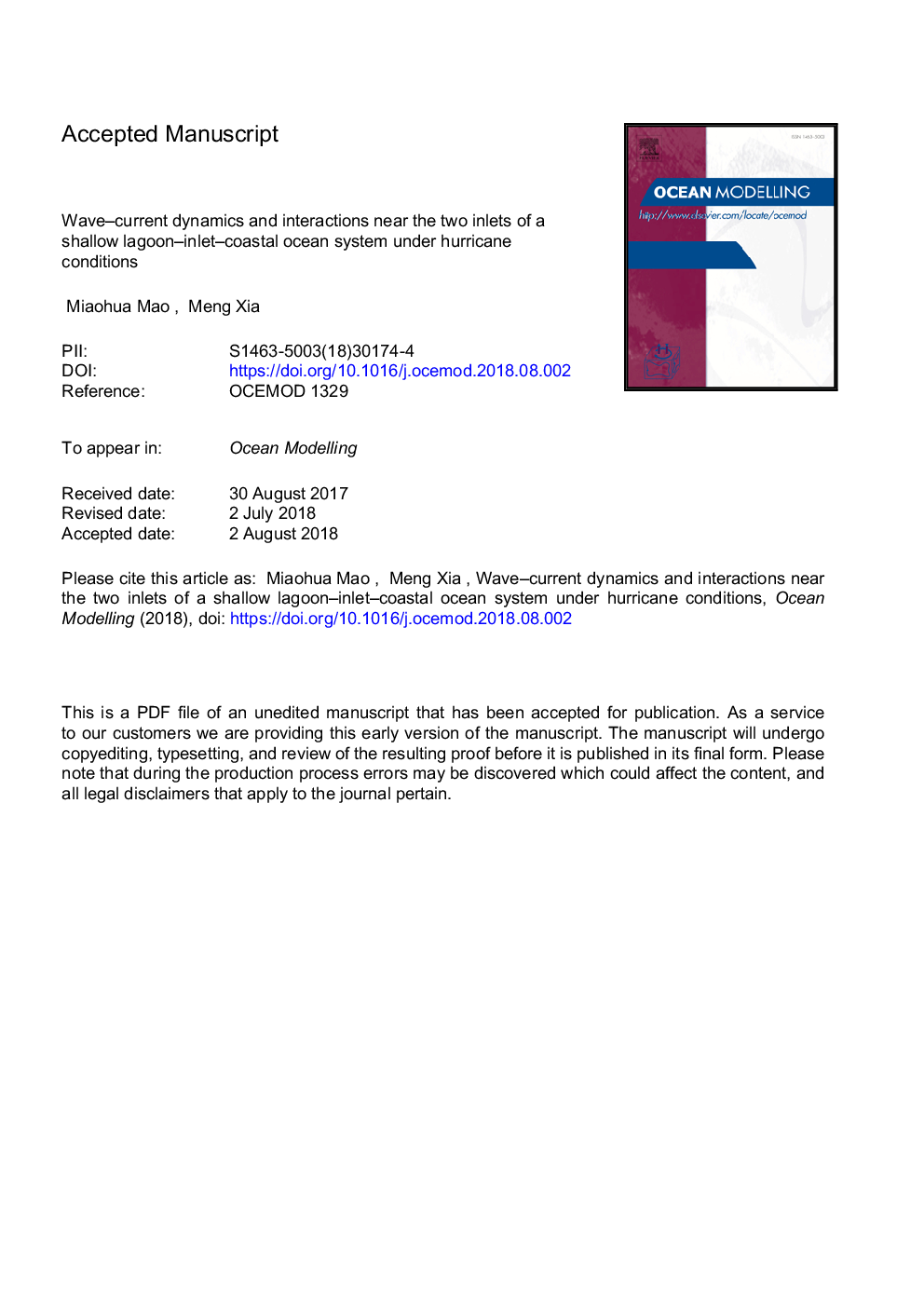| Article ID | Journal | Published Year | Pages | File Type |
|---|---|---|---|---|
| 8886485 | Ocean Modelling | 2018 | 52 Pages |
Abstract
Inlet wave-current dynamics and interactions are vital to the physical exchanges in a lagoon-inlet-coastal ocean system. A wave-current coupled model was calibrated and validated against observational data, and then applied to investigate the complex dynamics in the Maryland Coastal Bays during Hurricane Irene (2011). With the inclusion of wave-current interactions, skill in simulating the maximum total water surface elevation was improved under hurricane conditions. Major processes of wave-current interactions include the radiation stress-induced setup and current, and water depth variation-induced wave breaking. Wave-induced bottom friction and sea surface roughness are of secondary importance to nearshore dynamics. Further investigations reveal that tidal currents and ocean swells dominate inlet circulation and wave dynamics, respectively. Physical dynamics within the paired inlets are regulated by local winds, wave-current interactions, and unique inlet characteristics. However, wave dynamics in the lagoon and behind inlets are dominated by local winds and modulated by the shallow bathymetry. With the hypothetical closure of any inlet, wave-current dynamics and interactions behind the corresponding inlet are strongly altered, whereas they are weakly influenced from a remote one. Occasionally, the circulation near the narrow Ocean City Inlet area is influenced moderately by artificially shutting down the relatively wider Chincoteague Inlet. The finding from this work on the Maryland Coastal Bays can be beneficial to understanding similar lagoon-inlet-coastal ocean systems elsewhere.
Related Topics
Physical Sciences and Engineering
Earth and Planetary Sciences
Atmospheric Science
Authors
Miaohua Mao, Meng Xia,
